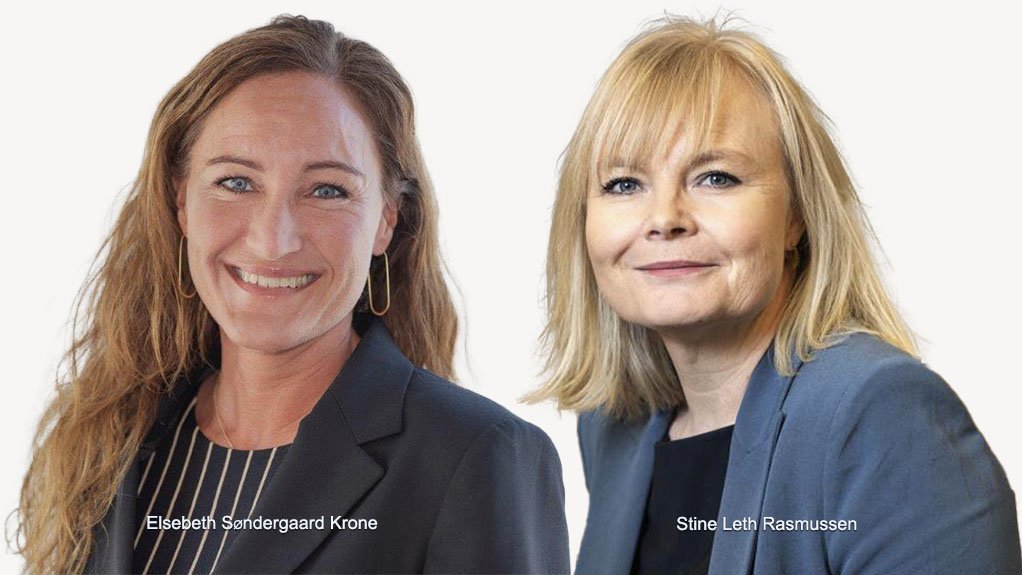South Africa has some of the best resources for wind and solar energy in the world. However, the country battles with grid constraints in areas with higher wind speeds, and little renewable-energy deployment in areas with available grid. The Danish-South African energy cooperation addresses these challenges, write Elsebeth Søndergaard Krone, Ambassador of Denmark to South Africa, and Stine Leth Rasmussen, Deputy Director-General of the Danish Energy Agency
With 90 percent of the Danish energy consumption covered by fossil fuels back in the 1970s, the oil crisis inspired us to seek new paths to become energy independent in a sustainable way. Today, more than 60 percent of Denmark’s electricity consumption comes from wind and solar energy. Some windy days, we even have 100 percent wind power in our sockets – without compromising our world record security of electricity supply. Thousands of green jobs within consulting, service, maintenance, production and construction now support the whole value chain of renewable energy.
Our green energy transition has not been easy, and through decades, we have learned our hard lessons, for example with regards to tendering renewable energy/offshore wind and integrating large shares of renewable energy into our electricity grid. We are sharing these lessons learnt with South Africa through our strategic energy partnership and with stakeholders in South Africa’s energy landscape. In this way, we support the journey away from fossil fuels towards building a new, just and more sustainable energy supply generating new green businesses and jobs.
During a visit from the Danish Energy Agency to South Africa from 7 to 10 October we will, together with our South African partner institutions, discuss some of the results of two projects, which address the opportunities of developing renewable energy in Mpumalanga and other areas with high grid capacity but more moderate wind speeds.
Firstly, we have provided technical inputs to a soon-to-be-launched report by the Independent Power Producer Office (IPPO). The report addresses the impact on power prices related to location of renewable projects in areas with lower wind speeds and fewer solar hours than other areas. Concretely, this report brings forward considerations related to investing in renewables in the provinces of Mpumalanga, which already has an extensive grid, and Northern Cape, that has less grid, but more wind and sun. A key finding is that while the grid is being expanded to often remote areas with abundance of wind and sun, like Northern Cape, an emphasis should also be put on driving developer interest towards renewable energy projects in provinces such as Mpumalanga.
The second project serves the exact purpose of supporting the development of renewable energy in Mpumalanga. Together with our South African partners, we have collected data and visualized this through a digital map, which gives an overview of suitable areas in Mpumalanga to concentrate renewable energy projects. Also with a focus on areas with good possibilities of job creation. Easy access to vital data is key for successful tendering. The map improves the renewable energy developer’s access to crucial information about land use, infrastructure etc., and gives an overview of the grid capacity. It will also give the IPPO aspects to consider for regional targeted procurement rounds.
While this may sound like Mpumalanga is a so-so area for renewable energy, this is indeed not the case. South Africa happens to have some of the best resources for wind and solar energy in the world. The Wind Atlas of South Africa, also initiated between Danish and South African partners, has through energy modelling shown that Mpumalanga has wind speeds which are highly suitable for profitable wind power projects. This will provide specific wind data for developers to prioritize these provinces in the coming years’ buildout of the renewable energy sector.
Green transition takes time. We are confident, though, that by sharing the do’s and don’ts from Denmark’s green transition, we can contribute to accelerating a new green adventure to the benefit of all South Africans. We now look forward to discussing these results with a wide range of South African stakeholders. We strongly believe that the studies will be useful in unlocking the huge potential of renewable energy in South Africa in a just and transparent manner.
Edited by: Creamer Media Reporter
EMAIL THIS ARTICLE SAVE THIS ARTICLE
ARTICLE ENQUIRY
To subscribe email subscriptions@creamermedia.co.za or click here
To advertise email advertising@creamermedia.co.za or click here













